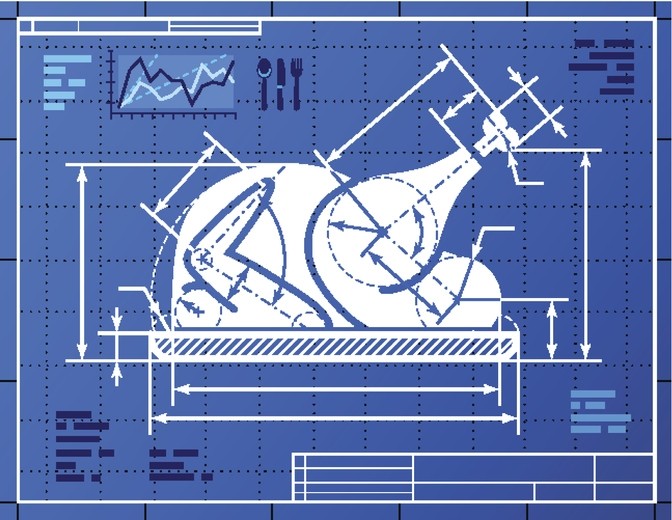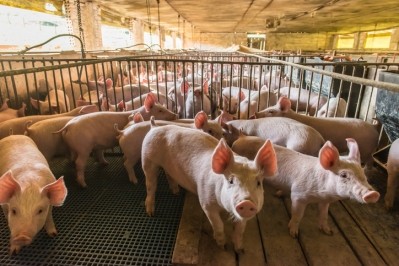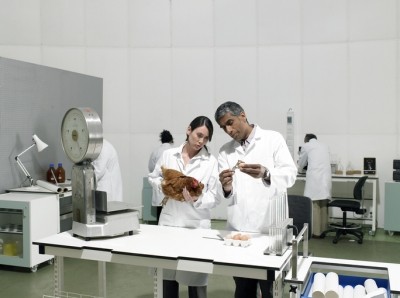Supplemental phytase boosts broiler bone quality

An international team of researchers from Brazil and the US explored the influence of varying phytase levels in diets with different phytate amounts on broiler live performance and bone characteristics. The study was published in the Journal of Applied Poultry Research.
“The objective of the present study was to evaluate the effects of different phytase levels in diets formulated based on vegetable feedstuffs, vegetable plus animal, and animal origin (high, medium, and low phytate, respectively) on live performance and bone characteristics of broiler chickens during the starter phase,” the researchers said.
The researchers found that feed intake was the best for birds receiving a low phytate (LP) diet with 1,051 FTU kg-1 phytase. Bone ash for birds on the LP diet had the best response when 1,101 FTU kg-1 phytase was included.
Birds on the negative control (NC) diet had a bigger hypertrophic cartilage zone compared to those on the positive control (PC) diet, and birds on both the NC and LP diets had lower serum calcium (Ca) and phosphorus (P) that those on the high phytate (HP) and medium phytate (MP), they said.
Birds receiving the NC plus 500 FTU kg-1 diet had reduced tibia P amounts compared to birds on the PC diet, and broilers on the HP diet had increased tibia Ca than birds on the LP diets. Birds on the HP diets tended to have higher bone P than those on the LP or MP feeds.
“The use of 1,101 FTU kg−1 resulted in better bone characteristics when fed with the lowest phytate level, and this level does not negatively affect the other parameters evaluated,” the researchers said. Phytase supplementation boosts broilers' bone quality and performance.
“Diets with reduced calcium (Ca) and phosphorus (P) levels without phytase supplementation had negative effects on broilers' performance and BS [bone strength], DM [dry matter], and BA [bone ash] content and led to a higher value for hypertrophic cartilage zone,” they added.
Exploring phytase, phytate interaction
Broiler diets tend to include high levels of vegetable ingredients, which have a large amount of phosphorus in the form of phytate, the researchers said. However, the phytate form present is unavailable to broilers.
“Phytate is negatively charged under many pH conditions, and because of this property, phytate can form complexes with positively charged molecules and reduce their digestibility,” they said. “Forming complexes with other nutrients can reduce the digestibility of those nutrients in the digesta, which makes them unavailable for use by animals.”
Phytase is a subgroup of phosphatases that are able to start phytate dephosphorylation, they said. “In theory, the enzymatic hydrolysis of phytate generates a series of lower myo-inositol phosphate esters, through a succession of dephosphorylation reactions, to produce inositol and 6 radicals of inorganic P.”
However, factors including the amount and source of P, level of dietary calcium, animal species and age, the type or amount of cereals used in the diet, phytate source, presence of antinutritional factors, and the type of phytase used all can alter the ability of phytase to breakdown phytate, they said. The location of phytate in feed ingredients is also a factor.
Why evaluate phytase levels in broiler diets?
To improve feed use and lower feed costs producers have started adding animal by-products to diets, the researchers said. In some countries, the growth in livestock and market for animal proteins has generated a large amount of this type of by-product.
“According to the study by Rostagno et al., meat and bone meal has 8.55–14.1% of total Ca and 4.59–7.54% of total P, with 4.13–6.79% of that being available P; the poultry by-products contain 4.06–4.34% of total Ca and 2.37–2.54% of P that is available,” they said.
“These animal by-products have been proven to be good protein, Ca, and P sources and are relatively inexpensive that they allow nutritionists to reduce or replace the amount of inorganic P in diets,” they said. However, there are questions regarding the use of by-products and the influence on phytase.
Feeding trial details
In the feeding trial, 2,625 broiler chicks received one of 15 diets for a 21-day period, the researchers said.
The diets included high phytate (HP) 2.45g kg-1, medium phytate (MP) 2.34g kg-1 or low phytate (LP) 2.23g kg-1, they said.
“Fifteen experimental diets were formulated with different phytate contents combined with a positive control (PC) diet which aimed to meet the calcium (Ca) and phosphorus (P) requirements of the birds; the negative control (NC) with a reduction of 0.15% of total Ca and 0.15 of available P,” they said. “The phytase product used, a fungal 3-phytase, was added to the NC at a rate of 0, 500, 1,000, or 1,500 FTU kg−1.”
Bird were checked for weight gain (WG) and feed intake (FI) at day 21 and the feed conversion ratio was calculated, they said. Blood samples were collected for analysis on day 21 and sample birds were harvested to obtain tibia for evaluation – bone strength (BS), tibia ash (BA), Ca and P concentrations, bone mineral density (BMD) and tibial dyschondroplasia (TD) were checked.
Results
Overall, no interaction for weight gain and FCR was found, the researchers said. Feed intake was better, but FCR declined for birds on the HP diets compared to those on the LP feeds, and broilers on NC diets with no phytase supplementation had the poorest weight gain and lower FI compared to those on the PC feeds.
Birds getting 1,000 and 1,500 FTU kg-1 had the best WG and FCR compared to the PC birds, they said. FCR improved linearly as more phytase was added to diets.
However, there was an interaction between phytate and phytase for feed intake, they said. Feed consumption was higher for birds on HP diets with reduced Ca and P and no phytase compared to birds on the LP diets.
“Phytase supplemented to the NC diet at 500 FTU increased (4.1%) the FI of birds fed HP, when compared with birds on the LP diets,” the researchers said. “With 1,000 FTU kg−1 of inclusion, there was no differentiation between FIs.”
“A quadratic effect was observed only between phytase supplementation and LP diet, and the level of phytase that provided the maximum FI responses was estimated at 1,051 FTU kg−1,” they added.
Phytase supplementation and phytate content interacted for serum Ca, P and alkaline phosphatase (ALP), they said. Serum C and P for birds on the LP diets were reduced compared to birds on MP and HP diets but only for the NC feed.
Birds getting the HP diet with 1,000 FTU kg-1 phytase had increased levels of serum P than those on the LP diet, they said. “Blood Ca linearly increased in broilers fed with HP, and the quadratic effect was observed when broilers were fed with LP diets; the level that was determined as providing the maximum response value was 1,029 FTU kg−1 phytase,” they added.
Broilers fed different phytase levels and all phytate concentrations had a quadratic response for blood P – the maximum response was established to be 1,067, 995 and 992 FTU kg-1 for HP, MP, and LP, respectively, the researchers said. However, for ALP, only broilers on the MP diets had quadratic behavior.
Birds receiving the LP diet with no phytase supplementation had lower bone P than birds on the MP diet, they said. Broilers eating HP diets with 1,000 or 1,500 FTU kg had increased P content.
“Tibia Ca content in broilers fed with LP diets had a linear adjustment, and upon increasing phytase levels, there was an increase in Ca content,” they said.
However, there was no influence from phytate and phytase level on Seedor Index, growth plate or BMD, they said. Broilers receiving NC diets with no phytase supplementation and the lowest BS, dry matter and BA levels and increased value of hypertrophic cartilage zone.
“Most measurements had the best fit with quadratic adjustments, and the equations derived showed the most significant values for supplementation at 1,140 (BS), 1,008 (DM), and 1,304 (BA) FTU kg−1,” the researchers said. For the hypertrophic cartilage zone “1,308 FTU kg−1 may provide a tendency of TD.”
Source: Journal of Applied Poultry Research
Title: Phytase and phytate interactions on broilers' diet at 21 days of age
Author: J. Broch, E.C. dos Santos, J.L. Damasceno, P.O. Nesello, C. de Souza, C. Eyng, G.M. Pesti, R.V. Nunes
DOI: Published online before print doi.org/10.1016/j.japr.2019.10.010














